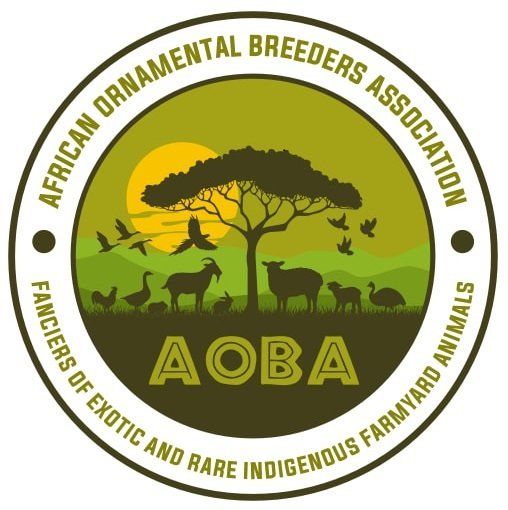The Waas Bantam
Belgian Bantam & Waasse Bantam: two Belgian bantam breeds with a shared origin
The Belgian Bantam and the Waasse Bantam are two closely related Belgian bantam chicken breeds that both descend from local landraces once widespread across the country. These breeds were developed in the early 20th century through selective breeding from these traditional types.
The Belgian Bantam originated around 1900 in the Liège region, making it a Walloon breed. It was developed by selecting from local bantams, which were commonly referred to in Flanders as “English chickens” ("Engelse kiekens" or "Engelse kiekskes"). At the same time, other breeds were being developed from local fowl — such as the Bassette in Belgium and the Dutch Bantam in the Netherlands. The official breed standard for the Belgian Bantam was established in 1934, and since 2000, the breed registry has been maintained by the Royal Federation of Small Animal Breeders of Belgium. Today, the breed is most commonly found in Flanders, and to a lesser extent in Wallonia and the Netherlands.
The Waasse Bantam, by contrast, is a distinctly Flemish breed originating in the Waasland region, west of Antwerp. Genetically, it is nearly identical to the Belgian Bantam, with just one visible difference: the type of comb. The Waasse Bantam has a rose comb, while the Belgian Bantam has a single comb. In local dialect, this small chicken is also affectionately known as the "Steens Kieksken". Apart from the comb, the two breeds follow exactly the same breed standard.
This difference in comb type is rooted in genetics. The rose comb is dominant, and the single comb is recessive. This means that two Waasse Bantams can occasionally produce a chick with a single comb — a Belgian Bantam. However, a Belgian Bantam, being genetically pure for the single comb trait, will never produce a Waasse Bantam.
When two Waasse Bantams each carry the gene for the single comb, they can together produce offspring with that trait. If a Belgian Bantam is crossed with a Waasse Bantam that is genetically pure for the rose comb, all resulting chicks will have rose combs.
Though the difference between these two breeds may seem minor at first glance, it reflects a fascinating genetic story and a rich regional heritage. Two Belgian bantam breeds — one from Flanders, one from Wallonia — each with its own character and cultural background.
My start with Waas bantams. by Jean Kiala-Inkisi
In January 2025, I acquired 205 Waas Bantam hatching eggs, along with 8 Waas Bantam hens and 2 Waas Bantam cockerels in various colors from Kristof Van Goethem. He also generously provided me with a Blue Partridge Belgian Bantam cockerel, which originally came from Pieter Van Dyck. Additionally, I obtained three more cockerels from Jan De Coninck: a Yellow Partridge Waas Bantam cockerel, a Red-Shouldered Silver Partridge Waas Bantam cockerel, and a Dirty White Red-Shouldered Silver Belgian Bantam cockerel.
The eggs hatched in early February 2025, and I raised the resulting chicks in a separate pen to preserve the integrity of their bloodlines.
In March 2025, I separated the Belgian Bantam chicks from the Waas Bantam chicks that had hatched from Kristof Van Goethem’s eggs. I then traded them with Pieter Van Dyck for a White Red-Shouldered Silver Partridge Belgian Bantam cockerel carrying the gold, silver, and dominant white genes. He also gave me a Belgian Bantam Partridge hen. This cockerel was a significant addition to my breeding project, particularly in my efforts to develop White Partridge Waas Bantams.
During April and May 2025, I incubated approximately 300 Waas Bantam hatching eggs, sourced from, among others, Jan De Coninck, Tijs Hooftman, and Cedric Van de Walle. Overall, the fertility rate was very good. However, I must honestly note that many of the resulting chicks did not meet the desired color expectations, with the majority turning out to be Blue Partridge.
As of May 31, 2025, my observation is that Blue Partridge is currently the most common color among Waas Bantams in Belgium. The Partridge, Blue, and Black varieties appear less frequently, while Wheatens and Silver Partridges are quite rare. White, Silver Wheaten, and Yellow Partridge are extremely rare.
Initially, my plan was to continue incubating eggs until September. However, as fertility declines, I’m stepping away from that plan. It’s not that I mind raising chicks during the winter, though.
And to those pessimists who accused me of breeding for quantity: out of the 300 chicks, I’ve only kept about 10. The rest were culled. Hatching large numbers was necessary in order to apply strict selection and still have something worth keeping. The overall state of the population leaves much to be desired.
Based on what I have purchased, received, or hatched, these are the chickens I have chosen to keep and grouped into the following breeding flocks.
I want to explicitly state that neither I nor AOBA are breed experts of the Waas Bantam. We are just pure luck for what we got in our hands. All honor goes to the breeders who went before us.
Jean Kiala-Inkisi
President - African Ornamental Breeders Association (AOBA)

